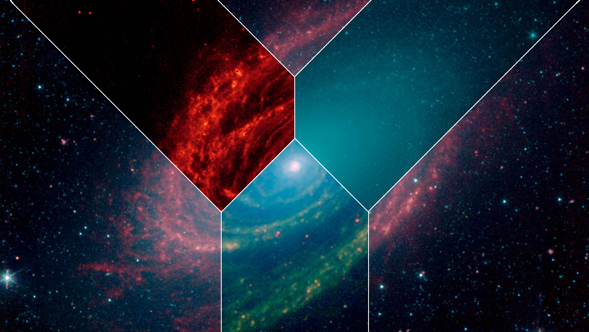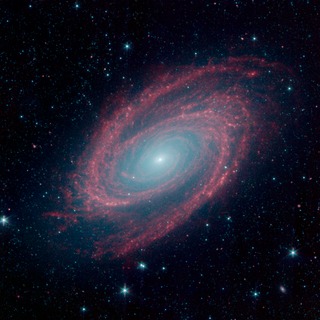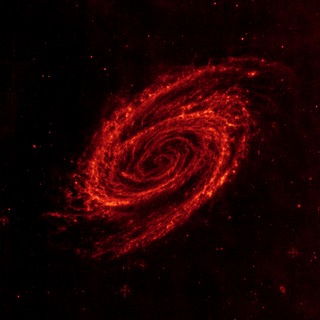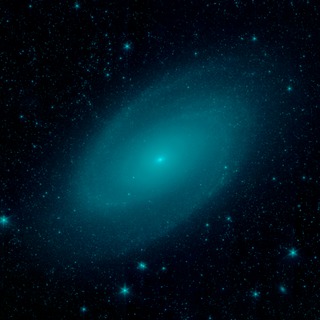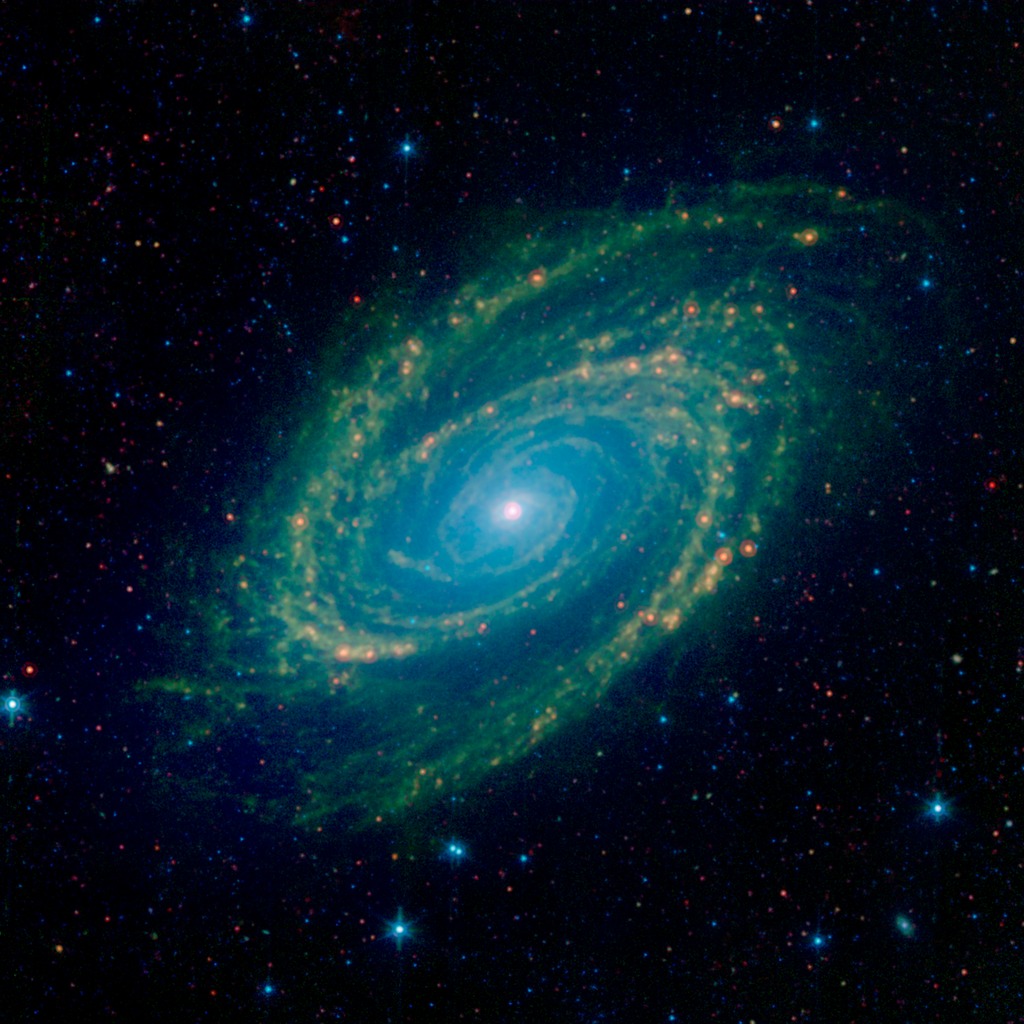
Credit: NASA/JPL-Caltech
Observation • August 27th, 2019 • ssc2019-15b
ssc2019-15b
The magnificent spiral arms of the nearby galaxy Messier 81 are highlighted in this image from NASA's Spitzer Space Telescope. Located in the northern constellation of Ursa Major (which also includes the Big Dipper), this galaxy is easily visible through binoculars or a small telescope. M81 is located at a distance of 12 million light-years.
M81 was one of the first publicly-released datasets soon after Spitzers launch in August of 2003. On the occasion of Spitzers 16th anniversary this new image revisits this iconic object with extended observations and improved processing.
This Spitzer infrared image is a composite mosaic combining data from the Infrared Array Camera (IRAC) at wavelengths of 3.6/4.5 microns (blue/cyan) and 8 microns (green) with data from the Multiband Imaging Photometer (MIPS) at 24 microns (red).
The 3.6-micron near-infrared data (blue) traces the distribution of stars, although the Spitzer image is virtually unaffected by obscuring dust and reveals a very smooth stellar mass distribution, with the spiral arms relatively subdued.
As one moves to longer wavelengths, the spiral arms become the dominant feature of the galaxy. The 8-micron emission (green) is dominated by infrared light radiated by hot dust that has been heated by nearby luminous stars. Dust in the galaxy is bathed by ultraviolet and visible light from nearby stars. Upon absorbing an ultraviolet or visible-light photon, a dust grain is heated and re-emits the energy at longer infrared wavelengths. The dust particles are composed of silicates (chemically similar to beach sand), carbonaceous grains and polycyclic aromatic hydrocarbons and trace the gas distribution in the galaxy. The well-mixed gas (which is best detected at radio wavelengths) and dust provide a reservoir of raw materials for future star formation.
The 24-micron MIPS data (red) shows emission from warm dust heated by the most luminous young stars. The scattering of compact red spots along the spiral arms show where the dust is warmed to high temperatures near massive stars that are being born in giant H II (ionized hydrogen) regions.
About the Object
- Name
- M81 • Messier 81 • NGC 3031 • Bode's Galaxy • UGC 5318
- Type
- Galaxy > Type > Spiral
- Distance
- 8,500,000 Light Years
- Redshift
- 0.000113
Color Mapping
| Band | Wavelength | Telescope |
| Infrared | 3.6 µm | Spitzer IRAC |
| Infrared | 4.5 µm | Spitzer IRAC |
| Infrared | 8.0 µm | Spitzer IRAC |
| Infrared | 24.0 µm | Spitzer MIPS |
Astrometrics
- Position (J2000)
- RA =9h 55m 33.0s
- Dec = 69° 3' 52.7"
- Field of View
- 24.0 x 24.0 arcminutes
- Orientation
- North is 30.0° right of vertical
